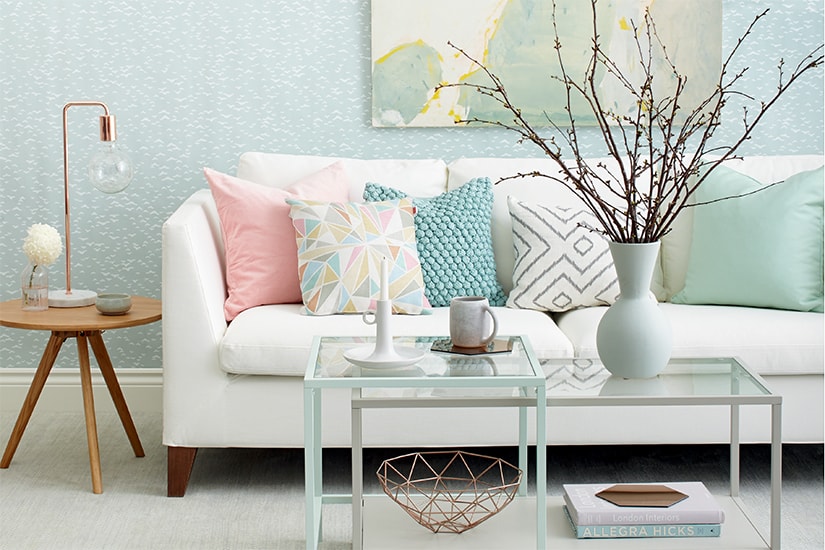Kitchen
Cabinetry 101

Kitchen
Cabinetry 101
DOOR STYLES
Slab
Flat door with no raised or recessed panels. May be single piece of wood or other material, several pieces laminated together and cut to size, or substrate with surface material like veneer or laminate.
Recessed panel
Frame with flat panel secured within. Frame, inner panel or both may be grooved or otherwise decorated.
Raised panel
Construction similar to recessed panel, but with inner panel made from several pieces of joined lumber, cut dimensionally and routed or shaped to desired profile, which protrudes past plane of frame.
Routed
MDF or other materials routed to simulate raised or recessed panels. May be painted or laminated.
DOOR HARDWARE
Knobs
Attached with one screw. Can be installed directly into fragile surfaces like glass. Easy to place exactly where you want them. Can be highly decorative. Less expensive than more elaborate hardware.
Pulls
Attached with two screws. Variety of lengths. Many design variations, from traditional to modern. Over time, fingernails and oils may affect door finish behind pulls. Must be sturdy or well made to prevent breaking.
Drop pulls
Similar to regular pulls but with pivoting handle. Curved, elegant shapes, lovely in furniture-style cabinets/units. Ideal where projection is problematic, as drop pulls hang flush with cabinet when not in use.
FINISHES & MATERIALS
Natural-finish wood
Pros Beautiful look - Wide variety of grains, colours, species - Modern urethane finishes protect wood for years - Choice of sheen levels, from matte to highgloss
Cons Light woods may darken over time, especially when exposed to sun - Shows dirt.
Cost: $$–$$$
Varies with species and construction quality - Fast-growing alder is least expensive of all softwoods, which also include pine and maple, while hardwoods like oak, cherry and imported exotics (teak and mahogany) are more expensive.
Stained wood
Pros Lighter, less expensive woods can be made to resemble darker, more exotic species - Hides dirt and stains - Choice of colours and stains (semi-opaque stains highlight grain) provides design versatility while imparting translucent sheen.
Cons Stain absorbed differently, depending on wood - Won't be protected from moisture and grease unless stain labelled “protective,” so urethane topcoat recommended.
Cost: $$ – $$$
Varies widely according to type and quality.
Painted surfaces
Pros Wide choice of colours - Highand semigloss finishes washable - Since substrate (underlying layer) won't show, can be less expensive wood or other material like MDF - Offer inexpensive facelift for ugly or old cabinets.
Cons Vulnerable to scratches - Spray lacquer provides smoothest finish, while brush or roller finishes aren't as smooth - Laminate and melamine don't accept paint as well as wood, unless melamine paint used.
Cost $ – DIY - $$ – pro job.
Solid wood
Pros Durable and long-lasting - Can be better grade than veneers.
Cons Natural variations in grain and colour - Vulnerable to warping, especially in humidity of kitchen - Serious damage may necessitate replacement.
Cost $$–$$$
Veneer
Pros Can have look of expensive woods at lower price - Greater warp resistance compared with solid wood - Often cut from one piece of wood, achieving uniform look - Damage is repairable.
Cons Veneer can lift or crack - Cheap veneers can look fake - Quality of substrate is key
Cost $–$$
Melamine
Pros Variety of looks at lower price, ranging from matte and highgloss finishes to imitation wood (sometimes quite realistic) - Easy to clean, virtually maintenance-free - Very stable in kitchen environment - Affordable.
Cons Less durable than other materials like wood - Difficult to repair if damaged - Can be cheap in looks and quality.
Cost $–$$
Stainless steel
Pros Resistant to corrosion - Low maintenance - Easy to clean - Highly durable - Comes plain or painted for high-tech kitchens - Great for those with chemical sensitivities - Inner core reduces sound vibrations.
Cons Polished finishes vulnerable to scratches and fingermarks (less obvious with textured or matte finishes) - Not yet widely available.
Cost $$$–$$$$
Laminate / Thermofoil
Pros Design variety at lower cost - More durable than melamine - Simulations of woods and other materials can be extremely realistic.
Cons Not as durable as real wood - Difficult to repair, as colour is only one layer deep - Quality of substrate is variable.
Cost $–$$
CABINET TYPES
Framed
Definition: Box with frame surrounding front edges to which door is attached, so hinges are visible.
Pros Sturdy construction - Hinges and frame show for traditional, classic look - Can be refaced with new fronts.
Cons Less access to interior than frameless cabinets.
Frameless
Definition^: Hinges attached directly to doors and end or side panels of box.
Pros Widely available - Hinges don't show, so suitable for modern, sleek look.
Cons Doors can start to sag over time.
Stock
Definition:Standard sizes often sold off-the-shelf or quickly ordered from retailers and kitchen companies.
Pros Economical - DIY - Increasingly wide variety of shapes and sizes - Fast delivery - Damaged unit can be replaced without rebuilding entire kitchen.
- Quality can be as good as more expensive options.
Cons More limited sizes and styles than semi-stock - No customization - May need filler strips to fit into existing space.
Semi-stock
Definition: Built to order within standard specifications, sometimes with choice of options.
Pros Wider variety of styles and finishes than stock - Allows for some customization - Often less costly than custom-built.
Cons Not as much variety as with custom - Longer wait time for delivery than with stock.
Custom
Definition Custom-built to exact specifications.
Pros Can be tailored to unusual or non-standard space, without fillers or modifications to space - Often, very high-quality craftsmanship and special materials
Cons Most expensive option - Longest wait time - Does not automatically mean the best quality, only that it's customized for you.














Comments